Announcements
-
Similar Content
-
Latest Posts
-
By Joe_Way_Jose · Posted
Okay, with all that being said about sloppy blowing from twins, I happily acknowledge the superiority of a single turbo setup on the RB; however, I still plan on double trouble. I know the -9s were quite popular for some time because they seemed to meet that sweet spot between the -7s and 5s, would introducing VCAM and/or stroking to 2.8L provide the additional displacement/flow to push twins closer to the 500-600 goal? Does it make more sense for a daily to just do an engine overhaul, slap some -7s on it and enjoy a bit more reliable power? Has anyone driven a mine's overhauled and tuned engine? I know they certainly don't approach the power numbers that you drag monsters do down under, but for daily street usage, I just want it to be fun and healthy. -
Mmmm. Perhaps more correctly stated that the one turbo doesn't actually force air back down the throat of the other. All it does, and all it has to do, is be pumping a little harder than the other turbo (which is an effect of how the turbos are getting driven by the exhaust and inherent resistance to output air flow that each turbo sees up to the merge). If the turbo that is not flowing quite as much then nudges the stall line (because it gets pushed there by the higher flowing one stealing the limelight and moving its own operating point further from the stall line), then you get the behaviour described by Josh. There is no need for air to move backwards in any way. It just needs to be less air moving forwards than is required to stay to the right of the surge line.
-
By joshuaho96 · Posted
GTX2860R Gen 2 is an option. No, it doesn't actually do much. The basic problem with wanting 600 whp out of the factory twin turbo setup is a few things. One is that the twin turbo piping is just so, so inefficient. The front and rear turbos are not actually working evenly. The rear turbo is always moving more air than the front. On top of this the OEM rear compressor inlet is rubber that likes to collapse causing a huge intake restriction. The merge doesn't even wait until the intercooler to happen, and it happens at a 90 degree angle. This is why you see some discussion about "turbo shuffle", where in certain conditions one turbo can actually force air to go backwards into the other compressor and stall it out, then once the other turbo recovers it stalls out the first turbo in a cycle until you do something to break out of it. The other issue is that the RB26 is just not that efficient an engine. It needs a surprising amount of ignition timing to reach MBT for a given cylinder pressure so all that time in which the cylinder is pressurizing before TDC is just wasted energy. An N54 might be around 10 degrees BTDC on a stock turbo getting into the boost. An RB26 is closer to 25 BTDC. Net effect is a turbo roughly the size of what HKS uses on the GTIII-SS (smaller than the R3/GCG Japan "GT2860-1" -7s) is only good for maybe 550 crank hp or low 400 whp while a roughly comparable turbo on an N54 can deliver something like 700 crank hp and obviously drivetrain losses are greatly reduced when you aren't burning a bunch of power on keeping a hydraulic pump + transfer case preloaded all the time. So yes, you can make a lot of power but there's a reason why people go single turbo for the numbers you're asking about. Don't forget that the RB26 can't even do a straight line pull without oil starving on the stock oil pan either. Baffles can help, but really you just need more oil capacity.
-


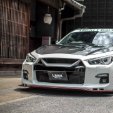
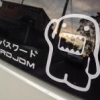
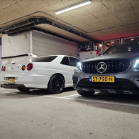
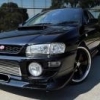
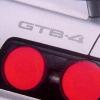
Recommended Posts
Create an account or sign in to comment
You need to be a member in order to leave a comment
Create an account
Sign up for a new account in our community. It's easy!
Register a new accountSign in
Already have an account? Sign in here.
Sign In Now